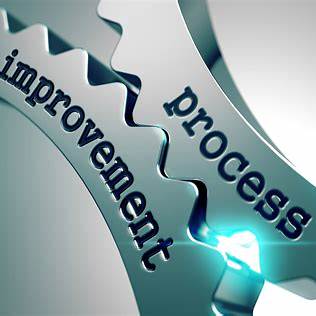Imagine needing ten people just to handle one customer service call. At this company, every step—answering the phone, ordering parts, receiving deliveries, scheduling, doing the work, and collecting payment—involved multiple handoffs and emails blasted to twenty people at a time. The result? Delays, confusion, and costs spiraling out of control. But with Lean Thinking, we transformed the process into a streamlined system managed by just three people—faster, cheaper, and far more effective.
Lean Thinking in Service Businesses
Originally developed in manufacturing, Lean is just as powerful in the service world because it focuses on eliminating waste and improving flow. Waste doesn’t always look like scrap materials or defective products—it often looks like wasted time, miscommunication, or duplicated effort. By applying Lean principles, this service company was able to transform a bloated process into a streamlined system that freed people’s time and improved customer satisfaction.
Step 1: Mapping the Process
The first step was to map out the existing workflow. Process-mapping means visually laying out each step, from the customer’s first call all the way to collecting payment. It shows who does what, where handoffs occur, and how information moves.
When we mapped this company’s service process, it became clear why things were so messy. Every step required multiple approvals, constant back-and-forth emails, and manual coordination. For example, once a customer called in, the request bounced between the front office, purchasing, parts receiving, the scheduler, and finally a service technician. Each department felt responsible for “keeping everyone in the loop,” which led to dozens of emails with no clear owner. It was a textbook case of complexity breeding chaos.
Step 2: Running a Kaizen Event
To tackle these inefficiencies, we held a kaizen event. A kaizen is a focused, short-term workshop where employees who touch the process come together to identify problems and brainstorm solutions. The goal isn’t just to make a chart of issues—it’s to design a better way of working that everyone buys into.
During this kaizen, the team identified several types of waste:
-
Overprocessing: Too many approvals for simple tasks.
-
Waiting: Delays while waiting for parts or for someone to check an email.
-
Motion: Work bouncing unnecessarily between multiple departments.
-
Defects: Jobs delayed or redone because the right parts weren’t available.
Once the team saw these wastes laid out, it was obvious that much of their effort added no real value for the customer.
Step 3: Designing a Better Workflow
We redesigned the workflow around flow and accountability. Instead of relying on email chains, we implemented a simple ticketing system to track each service call. Every ticket followed a structured path: log the request → confirm the needed parts → schedule the job → complete service → close and collect payment.
The ticketing system created a single source of truth. Everyone could see the status of a job at a glance, without needing to ask or send an email. More importantly, it clarified who was responsible at each step. The scheduler didn’t need to chase the parts department, and the technician didn’t need to wonder whether the customer was ready. The system made the process visible and reliable.
The Results
The transformation was remarkable:
-
Headcount reduced from ten to three. Only three people were needed to manage the process, and the other seven employees were redeployed into more valuable roles within the company.
-
Cycle time dropped dramatically. Jobs were scheduled and completed faster because the right parts were on hand when needed.
-
Cost savings increased. By eliminating wasted effort and preventing delays, the company saved both labor costs and the hidden costs of frustrated customers.
-
Employee morale improved. People no longer spent their days chasing emails or waiting on approvals—they could focus on meaningful work.
-
Customer satisfaction rose. Customers got faster service with fewer errors, leading to stronger relationships and repeat business.
Broader Lessons for Service Businesses
This story isn’t unique. Many service businesses—whether in plumbing, IT support, healthcare administration, or professional services—face the same challenges: too many handoffs, unclear accountability, and processes that grow more complicated over time.
Lean Thinking offers a proven way to cut through that complexity. By asking simple questions—Where are we wasting time? What steps truly add value for the customer? How can we simplify handoffs?—leaders can uncover hidden inefficiencies.
And the best part is, Lean doesn’t require expensive software or months of consulting. Sometimes, as in this case, a simple ticketing system and a redesigned workflow can completely change how a business operates.
Taking the First Step
If your service process feels bogged down by bottlenecks, endless emails, or frustrated employees, it may be time to step back and look at it through a Lean lens. Start by mapping the current process. Hold a kaizen event with your team to identify waste. Then, redesign the flow around simplicity and accountability.
The results can be transformative: faster cycle times, lower costs, happier customers, and freed-up employees who can focus on higher-value work.
Lean Thinking isn’t just for factories—it’s a strategy every service business can use to eliminate waste, fix flow, and scale without chaos.



